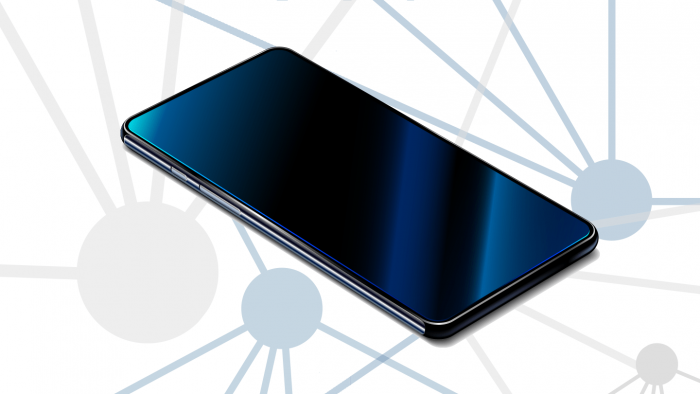There is a smartphone revolution coming, and an AI sense of hearing is driving it
Sound recognition will deliver a wave of new experiences on smartphones, and Audio Analytic's recent consumer research clearly shows a strong desire from users for these new AI-powered capabilities on their next device.
AI is having a significant impact on smartphones and the experiences that they deliver to consumers. This includes on-device voice assistants, image processing algorithms that help turn us all into Annie Leibovitz (ok, maybe not quite), image recognition algorithms that tell us what is in our photos, and much more.
While these valuable advancements in speech, image processing, and object recognition are really important, smartphones with an intelligent sense of hearing will be able to do much, much more. This new contextual sense will enhance these popular phone capabilities and enable new ways for smartphone OEMs and app developers to deliver personalised experiences for users.
Both Apple and Google recently announced new versions of iOS and Android respectively, which promise intelligent, personalised experiences. With sound recognition, the smartphone industry can go further, optimising for ‘right here, right now’, wherever the user is and whenever they are using their device.
The independent research, carried out by renowned market research firm Sapio Research among thousands of 18-44-year-olds in the US and UK, shows that consumers see the benefit of sound recognition based capabilities that help them get more out of their phones. There is a strong appetite for this new AI capability, whether that is helping them to connect and entertain family and friends in convenient and fun ways, personalise the way the phone behaves, get more out of the video and photo content that they capture, or helping them to stay in touch with the world around them.
Here are some of the highlights from Audio Analytic's consumer research:
Contextually sensitive settings — 78% of respondents would like their smartphone to automatically adjust the style and volume of ringtones and notifications based on the acoustic environment around them. A further 17% said “maybe” to this feature.
This means that as consumers leave a busy coffee shop and enter a quiet office, their phone recognises the change in their surroundings and adjusts its behaviour accordingly (to avoid embarrassing them). Or perhaps it recognises that they are in a chaotic acoustic environment, like a bar, and makes sure that they don’t miss that important message to say that their friend is running late.
There is also a range of other UI modifications that can be driven by the acoustic environment around the user.
Watch this short video to understand more
Making and sharing memories — 62% of respondents want their smartphone to recognise and tag the sounds featured in videos they record or photos that they take. A further 22% said “maybe” to this feature.
This means that consumers can capture their child’s birthday party in all its glory and then share those moments with family, friends or followers, complete with relevant stickers, filters, effects or frames that are suggested during editing. As the memories are tagged with sounds, powerful new search tools will enable users to find those memories in the future by combining sounds and other metadata, such as time, location, etc.
Watch this short video to understand more.
Augmenting our sense of hearing — While 80% of respondents reported no form of hearing loss, 74% of all respondents want their smartphone to recognise essential sounds around them, such as a delivery driver knocking at the door or a dog barking. A further 18% said “maybe” to this feature.
This means that users can be alerted to sounds that they can’t hear because their hearing is impaired through hearing loss or wearing noise-cancelling headphones or earbuds.
Watch this short video to understand more.
Injecting spontaneous fun into video calls — 56% of respondents want their devices to apply AR filters and effects based on the sounds they make. A further 23% said “maybe” to this feature.
This means that rather than scrolling through endless AR effects while engaging with a friend or family member online, users can transform themselves based on the sounds they make and, as a result, create magical little moments that bring people closer together. For example, who can make the best farmyard impression?
Watch this short video to understand more.
Audio Analytic have built accurate and robust AI technology that can deliver such stand-out features. This research shows that there is considerable consumer demand. And their compact edge-based sound recognition software platform has been pre-verified by Qualcomm to run on both the Snapdragon 888 and Snapdragon 778G 5G Mobile Platforms. This gives smartphone OEMs the confidence and the opportunity to unleash this new wave of consumer experiences on next-generation models.
About the survey methodology
The survey was conducted among over 2,005 smartphone owners in the US and UK, all between 18 and 44 years of age and representative of gender, age and location.
Results of any sample are subject to sampling variation. The magnitude of the variation is measurable and is affected by the number of interviews and the percentages expressing the results. In this particular study, the chances are 95 in 100 that a survey result does not vary, plus or minus, by more than 2.2 percentage points from the result that would be obtained if interviews had been conducted with all persons in the universe represented by the sample.
